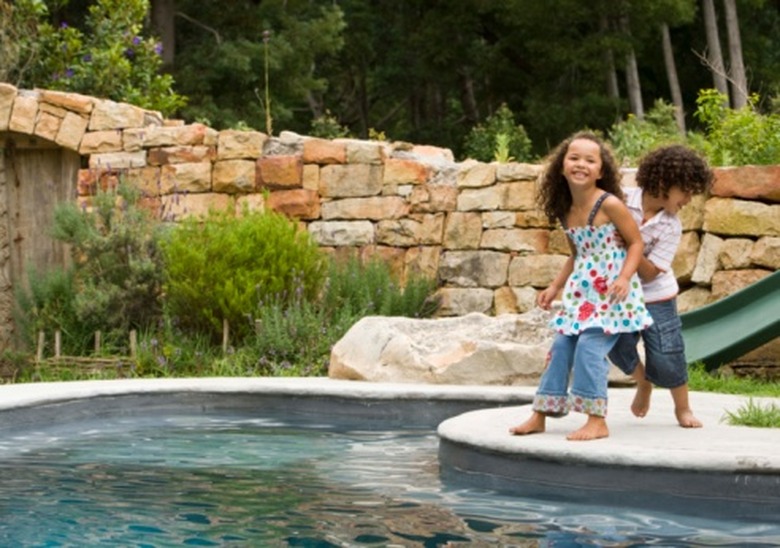What Causes Mustard Algae?
Mustard algae, commonly referred to as yellow algae, is chlorine-resistant algae found in sunbelt areas such as California, Texas and Florida. This algae is a wall-clinging variety that resembles sand or dirt, and grows in the bottom or sides of the shady parts of a pool. Mustard algae is difficult to eradicate, as re-infection is common.
Causes
There are a few different factors that cause mustard algae. Algae spores enter pools in various ways, including contaminated equipment or swim suits, rain and wind. Under certain conditions, algae will quickly bloom, seemingly overnight. These conditions include warm temperatures, the presence of carbon dioxide or nitrates, out-of-balance water and warm sunny days. Poor pool care, including lack of circulation, poor sanitation and filtration, is also a cause of mustard algae.
- Mustard algae, commonly referred to as yellow algae, is chlorine-resistant algae found in sunbelt areas such as California, Texas and Florida.
- Poor pool care, including lack of circulation, poor sanitation and filtration, is also a cause of mustard algae.
Characteristics
There are certain characteristics that are specific to mustard algae. Mustard algae creates a high chlorine demand but is extremely chlorine resistant, and will survive in pools with high levels of chlorine. Although it easily brushes away, mustard algae will quickly return, usually in the same spot. Unlike some algae, mustard algae is not slimy and is often mistaken for iron or copper staining. Mustard algae will not create murky or hazy water, the algae forms in sheets that cling to the bottom and sides of the pool, however, the water remains otherwise clear.
Prevention
There are a few measures a person can take to prevent the formation of mustard algae. Use the pool on a regular basis and maintain general pool cleanliness by cleaning items used in the pool, such as toys and ladders. Regular pool maintenance, such as maintaining adequate sanitizer levels, running the filter at least 10 hours per day and weekly vacuuming and brushing of the pool surfaces and walls, is also important in mustard algae prevention. Other preventative measures include shocking the pool and adding algaecide on a weekly basis.
- There are certain characteristics that are specific to mustard algae.
- Mustard algae will not create murky or hazy water, the algae forms in sheets that cling to the bottom and sides of the pool, however, the water remains otherwise clear.
Treatment
Once mustard algae infects a pool, begin treatment by balancing the water, ensuring the pH is correct and checking and cleaning the filter system. Utilize automatic cleaning settings to increase circulation and run the filter for 24 hours. Shock the algae with thorough brushing–use steel bristled brushes for a plaster pool and nylon brushes for a vinyl pool–add algaecide and brush the pool again. After everything settles, vacuum up the waste and filter. For ongoing mustard algae, drain the pool, utilize pressure or acid washing to kill any embedded algae roots, and change or clean the filter.
